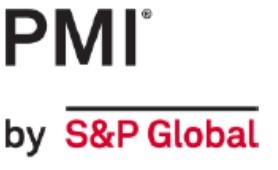The Purchasing Managers’ Index (PMI) data for manufacturing for July makes rather gloomy reading with most countries seeing multi-month lows and a number falling below the crucial 50 level.
The global PMI compiled by J P Morgan using the data from S&P Global (which excluded Ireland and Canada when it was published on Monday) fell to a two-year low of 51.1 and while it is still indicating expansion of activity, output was flat, orders contracted and employment growth in the sector stagnating. It was maintained above the 50 level by a combination of gains in stocks of purchases and longer than normal suppliers delivery times albeit at a lesser pace than in June which suggests a continued easing of supply chain constraints.
The UK was in the same position with the overall manufacturing PMI falling to 52.1 – its lowest reading for 25 months – but remaining in positive territory thanks to faster jobs growth, rising sticks of purchases and longer suppliers delivery times compared to normal. Both output and new orders fell in July; however, the report notes that the investment goods sector did see output continue to grow with the reduction concentrated in intermediate and consumer goods and all three sub-sectors reported a fall in new orders. There were a number of factors driving this including inflation, weak domestic demand, client uncertainty, the warm weather and a fall in export orders. In turn, the latter was attributed to a fall in demand from Europe (mainly due to post-Brexit issues), the USA and China.
In contrast to the UK, the Euro-zone has slipped into negative territory for the first time since the recovery from the initial pandemic with the overall manufacturing PMI at 49.8 (52.1 in June). It is, however, worth noting that the Euro-zone PMI had been below 50 from February 2019, a year before the Covid pandemic struck the economy. Both output and orders were down with, excluding the initial pandemic period, the latter falling at the fastest pace since the Euro-zone debt crisis in 2012.
Among the 8 countries in the Euro-zone covered by the survey, only Austria had a higher PMI than in June and, with the Netherlands (which had the strongest reading in the region) and Ireland, were the only ones to be above the crucial 50 level. France (49.5) and Spain (48.7) were at 26-month lows and Germany (49.3) and Italy (48.5) were at their weakest for 25 months – all four of these had been above 50 in June.
Among the other EU countries, Hungary (57.8) again bucked the general trend and recorded a small increase compared to June, but both Czechia (46.8) and Poland (42.1 – the weakest reading among the countries/regions that we cover) slipped further into negative territory and Sweden (53.1) while remaining positive, was also lower than in June.
Outside of the EU, Turkiye (46.9) also slipped further below the cut-off point and while Russia (50.3) and Switzerland (58.0 – still the strongest reading in our report) were in positive territory, both saw the PMI slip from the June level. For the latter of these, this was back to its weakest point since the same value was recorded in December 2020).
The situation in Asia is interesting because here we find both India (56.4) and the ASEAN group of countries (52.2) with a higher reading than in June – indeed, the increase in India is the strongest this month. By contrast, the region also includes the largest reduction compared to the June reading with Taiwan (44.6 from 49.8) falling much deeper into negative territory. South Korea (49.8) also fell below the crucial 50 level and while China (50.4) and Japan (52.1) both had positive manufacturing PMI’s, they also saw a lower level than in June.
That leaves the Americas where Brazil (54.0), Canada (52.5) and the USA (52.2) all saw a lower manufacturing PMI reading compared to the June levels while remaining above the 50 level; however, there was a more substantial reduction in Mexico (48.5) which returned to contraction after two months in positive territory.
The individual S&P Global PMI reports are available to download on their web-site at https://www.pmi.spglobal.com/Public/Release/PressReleases but we also have a summary charts report which is available to download below. You should note, however, that the PMI readings for Hungary, Sweden and Switzerland are not compiled by S&P Global but can be found with an appropriate internet search.

